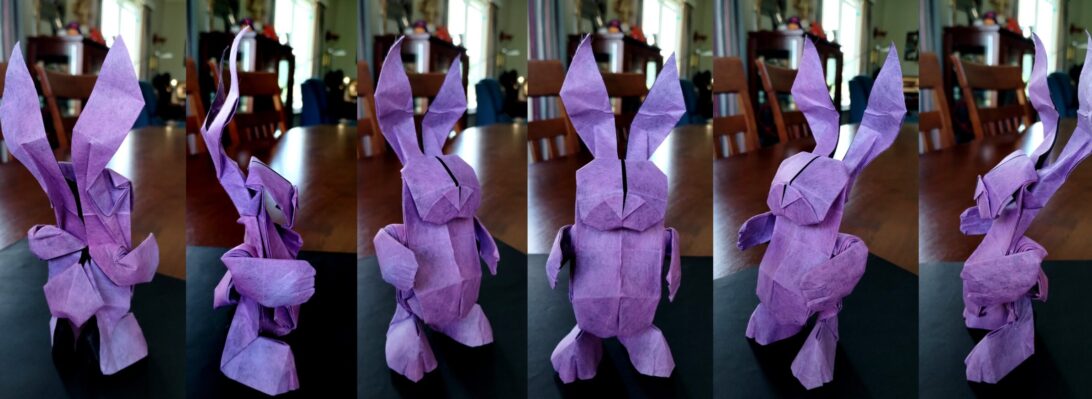Coupled to 8OSME, RMIT Design Hub is currently hosting an exhibition of important origami works called “Future Folds”. The opening event featured a panel discussion with Tomoko Fuse and Robert J Lang.

Panel discussions can be wonderful if the alchemy is right – the right combination of guests and questions. I am not sure we got a stellar set of questions posed, but it was encouraging to hear the guests speak of their obvious love of origami, and interesting to hear about their differing approaches to the artform.
We then proceeded to the gallery space to view a number of precious “holy grail” origami objects. Presented as the centerpiece was a large scale installation of Tomoko Fuse’s “OROCHI” (or large snake) – beautiful organic tube sculptures that seemed to have a life of their own.

Around the walls of the gallery were astonishing things, many of which I have only ever seen in documentaries and books – Tomohiro Tachi’s “Rabbit” for example. This was posited proof that using “Origamiser”, you can construct a crease pattern to replicate ANY 3d object using folds only. An amazing demonstration that would have been a nightmare to actually fold, but entirely possible to do so.

We saw some lovely examples of Jun Mitani’s curved fold works (some I have the CP of but have never successfully folded) and some original tree-maker inspired circle-packed designs for bugs and lobster from Robert Lang.

Present also were some lovely spiral forms and tessellations by Tomoko Fuse and an assortment of other precious folded things.
It is rare for such works to make it to Australia, and I was so glad to have been able to see them.


























